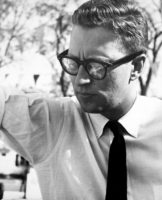The Kingsbridge Armory may be the largest armory in the world. At least, it had the biggest drill hall in the world, measuring 300-by-600 feet when it was built between 1912-17 by the firm of Pilcher & Tachau. After sitting vacant for nearly 20 years, plans are now in motion to turn that cavernous space into the world’s largest ice sports facility.
Located on Jerome Avenue in the Bronx, the landmark structure–modeled after a French medieval castle to project an image of intimidation and impregnability as was the style for militia buildings at the time–had instead become a symbol of neglect in a neighborhood in need of revitalization, fenced off and abandoned as politicians and developers fought over its future during a two-decade long saga.
Various plans to convert the turreted fortress surfaced over the years, including turning it into a shopping mall, a school, an entertainment center, and an indoor cycling facility. Developer KNIC Partners’ scheme to transform it into the Kingsbridge National Ice Center, in the works for four years, passed in a City Council vote of 48-1 yesterday for a final stamp of approval. “This approval is a historic occasion for the Bronx, New York City, and ice sports in the United States,” says Kevin Parker, principal of KNIC Partners, who would often have to travel with his hockey-player son for hours to find an available rink.
The $320 million-project, paid entirely by KNIC and slated to open in 2017 (the building’s 100th birthday), calls for nine professional-sized, year-round rinks. In a design by an architectural team that includes Murray Beynon of BBB Architects and Stadium Consultants International (SCI), and Alex Getov of Studio Antares, a central show rink will accommodate 5,000 seats around it to host major hockey and figure skating events. National Hockey League legend Mark Messier, a New York City hero for bringing the Stanley Cup back to the Rangers in 1994 after a 54-year drought, serves as Kingsbridge National Ice Center CEO. During a local radio show prior to yesterday’s vote, Messier said the project would create an “economic engine” in the Bronx. Though the borough may be famous for its illustrious baseball team and pick-up basketball games, Messier points out the lack of skating facilities throughout the five boroughs. “There are 1.5 million people in the Bronx alone and no rink,” Messier said. “Even if we built 70 rinks [around the city], it would still fall short of the national average.”
In a statement released yesterday, outgoing New York City Mayor Michael Bloomberg called the almost unanimous City Council vote “the result of years of collaboration and perseverance,” and touted the project–a personal victory as he leaves office–as “yet another example of our Administration’s commitment to turning what were once symbols of New York City’s decline–McCarren Park Pool, High Bridge, the High Line, and more–into community treasures and international attractions.”









Post a comment to this article
Report Abusive Comment